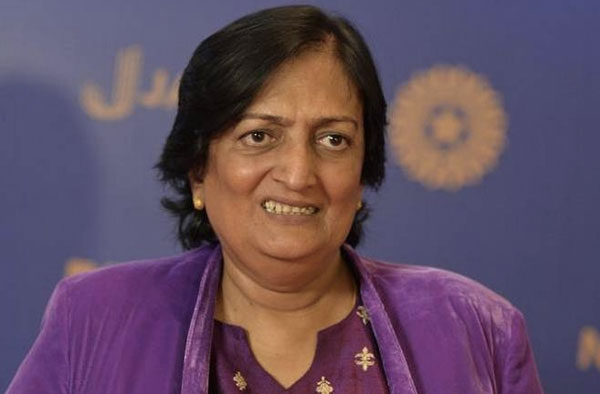Shantha Rangaswamy is one of the pioneering figures of Indian women’s cricket. She holds the records of many firsts to her name. She was the first captain of the Indian women’s test team, the first Indian woman cricketer to score a century (108) against New Zealand, the first captain to win a test and the first Indian female batter to hit a six. In 1976, she was the first woman recipient of the Arjuna award.

Even today, she stands tall in her field. In 2017, she became the first Indian woman to receive the Lifetime Achievement Award for Women by the BCCI. As recent as in October 2019, she became the first Indian female cricketer to represent the Indian Cricketers’ Association and the BCCI Apex Council.
Born on 1st January 1954, Rangaswamy, who played 16 Tests and 19 ODIs, made her test debut on 31st October 1976 against West Indies accumulating 750 runs at an average of 32.60. A terrific all-round cricketer, Rangaswamy also bagged 21 wickets with her medium-pace bowling with best figures of 4/42. Shanta made her ODI debut on 10th January 1982 against Australia and went on to play 19 ODIs of which she captained 16. In her career, she amassed 287 runs and picked up 12 wickets with best figures of 3/25.
Wishing a very #HappyBirthday to one of the Pioneers of Indian Women’s Cricket – Shantha Rangaswamy 🎂
🏆16 Tests, 19 ODIs
🏆1037 Runs, 33 Wickets
🏆Captained India to its first-ever Test Win in 1976
🏆Scored 1st Century by an 🇮🇳 woman cricketer
🏆Honored with Arjuna 🏅 in 1976 pic.twitter.com/YtGjCYIsh8— Female Cricket (@imfemalecricket) January 1, 2021
Having lost her father at the tender age of 12, her mother was the driving force who constantly egged Shantha and her 6 sisters to pursue education and become self-reliant. In Bengaluru’s Basavangudi neighborhood, Shantha and her 20 cousins would gather on weekends and play tennis ball cricket. This is how it all began, never to look back from there on.
Back in those days, there was no governing body for women’s cricket, infrastructure was non-existent. Her own cricket was learned through observation. But she did not give up, in fact, all the challenges only made her a stronger person, more determined and the face of Indian cricket in the days to come.
Given the vast contrast in the men’s and women’s cricket even today, one can only imagine the unsurmountable chasm that must have existed in Shantha’s playing days. She lost many of her prime years due to the lack of international tours. For years together there weren’t any tours at all and if at all one came by it was lost due to red tape. The most heart-wrenching feeling for any cricketer is not to play in the World Cup. This is exactly what happened to the Indian team in 1988 as the then Government didn’t give them permission to travel to Australia. But the fighter that she was, Shantha met the Indian Prime Minister to seek clearance, who intervened and granted permission. But it was a tad too late as the hosts Australia had completed all their formalities and India was denied entry.
Rangaswamy played her last international game in 1991. Even after calling it a day, her passion for the game only kept on growing. She took up an active role in nurturing women’s cricket. She spent a few years commentating on the game for Doordarshan and All India Radio. She then served as a coach of the Indian Team for a brief period before being appointed as a selector. She served as the chair of the selection committee, overseeing a period of great success for the Indian team that culminated in their terrific run in the 2017 World Cup.
Shantha Rangaswamy’s fond memories of the game are not the runs that she scored or the wickets that she took. But the fact that she was instrumental in laying the foundation for women’s cricket in India is what gives her the high. As this wonderful lady celebrates her 67th birthday today, let’s raise a toast to the woman who can be safely considered to be one of the “Founding Mothers” of women’s cricket.

Loves all things female cricket